Together with water, protein, fibre and sodium content, fat content is one of the five key parameters used in assessing food quality. Fat content is also significant in assessment of animal feed, and is determined as crude fat within the framework of Weende analysis. In addition to other parameters, fat content is often a decisive factor with regard to pricing in the food and animal feed trade.
The processing industry determines the fat content in raw materials to assess their suitability for specific processing steps and analyses the fat content of finished products as part of quality control.
In the environmental area, the fat content in water and sewage is determined in order to assess the body of water.
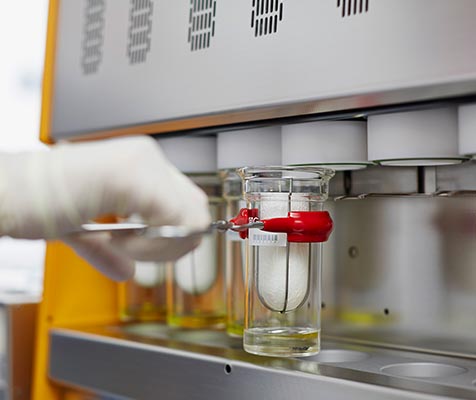
Determining the free fat content by means of extraction
A sample’s fat content is generally determined quantitatively by means of extraction using a lipophilic solvent. The free fat is recorded by direct extraction, without prior digestion.
The most commonly used extraction method is solid/liquid extraction. The prepared sample is extracted using the solvent. After extraction, the solvent is evaporated and the dried residue is weighed. The free fat content is calculated from the difference between the initial sample weight and the output weight.
Complete extraction in the return flow of the distilled solvent in accordance with the classic Soxhlet method is very time-consuming and takes several hours.
The American chemist Randall amended the method to include an extraction phase in which the extraction thimble with the sample is immersed directly in the hot solvent, which reduces the extraction time to less than an hour for most samples.
The SOXTHERM automatic rapid extraction systems perform extraction in a combined 5-stage method for up to 24 samples simultaneously, combining the benefits of hot extraction with the benefits of the traditional Soxhlet and Twisselmann methods.
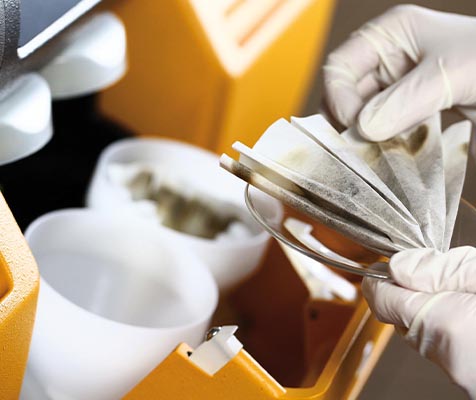
Determining the total fat content by means of extraction after prior hydrolysis
The content referred to as total fat includes the free fat, the bound fats and the soluble associated materials in the fat solvent.
For foodstuffs, the most commonly used method for determining the total fat content is extraction using acid digestion, i.e. the Weibull-Stoldt/Weibull-Berntrop method.
The sample is heated up with hydrochloric acid in order to digest proteins and release the bound lipids. The digestion solution is filtered and the fat remaining in the filter after drying is extracted with petrol ether. After the solvent is evaporated, the sample is dried and weighed and the fat content is determined as the difference between the initial sample weight and the output weight.
C. Gerhardt developed the HYDROTHERM automatic acid hydrolysis system for the complex and hazardous process of boiling in hydrochloric acid and the subsequent filtration and rinsing steps. The world’s first and only system hydrolyses 6 samples simultaneously in boiling hydrochloric acid and performs the complex filtration with all purge operations completely automatically - until all fat contents are transferred and the filter has been washed to pH-neutral. Because the system is self-contained, no extractor is necessary.

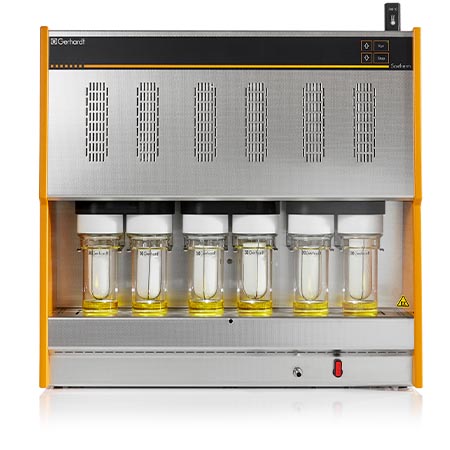
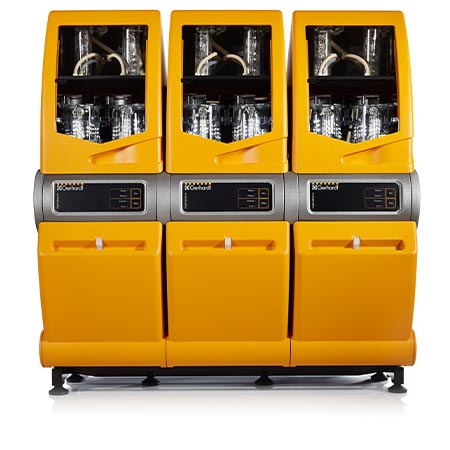
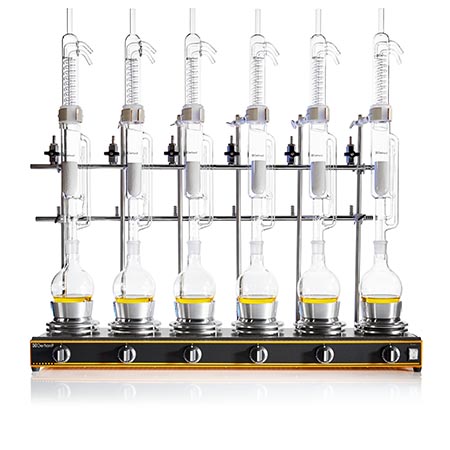
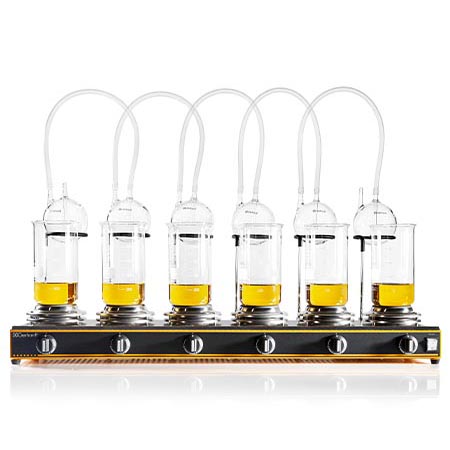
![[Translate to English:] [Translate to English:]](/fileadmin/_processed_/b/2/csm_kachel_800x800p_methode_soxhlet_blanco_web_ee66144619.jpg)
![[Translate to English:] [Translate to English:]](/fileadmin/_processed_/0/e/csm_cg_publications_800x800_hydrolysis_1f9033ef0b.jpg)